2025
醍醐寺
Daigoji
開催日時
2025年9月6日(土)
放送
Performance
Doors Open
Broadcast

Concept
鼓動
人は山に登り、問う。
生きることは、なぜこうも苦しいのかと。
野に伏し、山に伏し、
我、仏と共にあり。
山に籠る者は、山を母胎と呼ぶ。
母の身体に還り、
うまれかわることを願った。
やがて近づく漆黒の夜に、
ひとは「生きたい」という本能を知り、
差込む朝日に、生きる希望を抱いた。
葉擦れの音、獣の声。
木霊する姿なき音は、母の鼓動。
いのちの歌。
人は山に問い、そして誓う。
生きることを。
The Beat of Life
People climb the mountain, searching for an answer
Why is life filled with such suffering?
Monks who seclude themselves in the mountain call it a womb
Returning to her body, longing for rebirth.
Lying upon the earth, embraced by the mountain,
they breathe I am one with Buddha.
As the darkness of night deepens,
a primal instinct awakens I want to live.
In the morning light that pierces the abyss,
a flicker of hope emerges.
The rustling of leaves, the cries of beasts.
An unseen echo resounds
a mother’s heartbeat, the beat of life.
They encountered the mountain and vowed
to live.
THEME SONG of OTOBUTAI 2025 by Marihiko Hara
昨年に引き続き、音楽監督を務めます。
いにしえより深められてきた醍醐寺の叡智。
ここで鳴り響く山の鼓動、そして生きとし生けるものの命の鼓動に耳を傾け、生きることを見つめ直す一夜になることを願い、テーマ曲を紡ぎました。
日本古来の祈りが重なるこの場所で、皆さまとこのひとときを分かち合えることを心より楽しみにしています。
原 摩利彦
Application
for Viewing
観覧のお申し込み
まで一般観覧ご招待のお申し込みを受け付けております。詳しくは下のページをご覧ください。
Applications for viewing invitation will be accepted until . Please see the page below for details.
ABOUT“Daigoji”


Founded in 874 by Rigen Daishi, a disciple of Kōbō Daishi (Kūkai), Daigoji Temple is the head temple of the Daigo school of Shingon Buddhism. For over 1,150 years, it has served as both a monastery for the esoteric and exoteric teachings of Shingon Buddhism and the head temple of Shugendō, Japan’s tradition of mountain ascetic practice.
Extending from the foot of the mountain to its peak, Daigoji houses Kyoto’s oldest National Treasure, a five-story pagoda, and preserves 75,537 cultural artifacts, including Buddhist statues, paintings, and manuscripts. Recognized as a UNESCO World Heritage site, it remains a sacred place of prayer and spiritual devotion.
Since its founding, Daigoji has upheld the principles of compassion and tradition, passing down prayers and traditions alongside its invaluable cultural heritage.
Artists
-
岩井 優花 Yuka Iwai K-BALLET TOKYO
Ballet
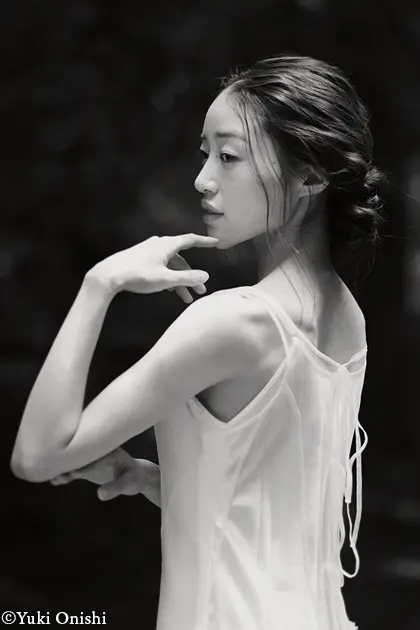
岩手県出身。4歳よりバレエを始める。2014年に渡米し、ジョフリー・バレエのトレイニープログラムに参加。翌15年、同スタジオカンパニーに入団。2016年ユース・アメリカ・グランプリNYファイナルでTOP12に選出され、17年にジョフリー・バレエへ正式入団。2021年よりK-BALLET COMPANY(現K-BALLET TOKYO)にソリストとして所属し、2024年12月にプリンシパルへ昇格。
熊川版『白鳥の湖』オデット/オディール、『シンデレラ』のタイトルロールなど、主要レパートリーで主演を務めるほか、幅広いジャンルの作品に出演。バレエ以外でも、ラブクロム(LOVECHROME®)のモデルに抜擢されるなど、表現の場を広げている。Born in Iwate, Japan, Yuka Iwai began studying ballet at the age of four. In 2014, she moved to the United States to join the Joffrey Ballet Trainee Program, later entering its Studio Company in 2015. She was named among the Top 12 Finalists at the 2016 Youth America Grand Prix NY Finals and joined the main company of the Joffrey Ballet in 2017. In April 2021, she returned to Japan to join K-BALLET COMPANY (now K-BALLET TOKYO) as a Soloist, and was promoted to Principal Dancer in December 2024.
Her notable roles include Odette/Odile in Kumakawa’s Swan Lake and the title role in Cinderella. With a repertoire spanning both classical and contemporary works, she continues to captivate audiences with her expressive artistry. Beyond the stage, she was also selected as a model for LOVECHROME®, extending her influence across artistic fields.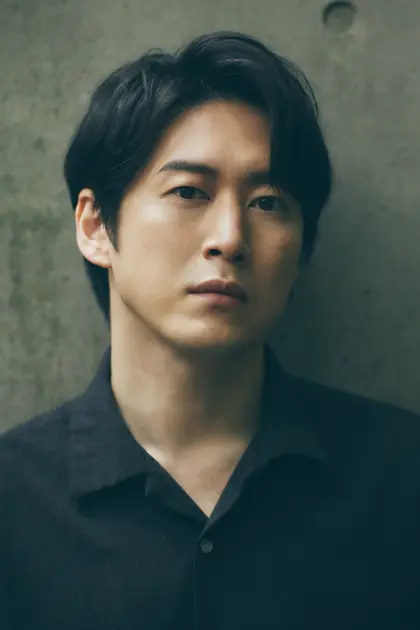
Choreographer
宮尾俊太郎 Shuntaro Miyao
バレエダンサー・俳優。14歳からバレエを始め、17歳でフランス・カンヌ•ロゼラハイタワーにバレエ学校に留学。2004年K-BALLET COMPANYに入団し2014年自らが座長を務めるBallet Gents(バレエジェンツ)を結成し、演出・振付を手掛ける。Kバレエカンパニーの常任振付として、振付分野でも活躍。2015年プリンシパルに昇格、ほぼ全ての作品で主演。
2026年新作K-BALLET TOKYO 「パリの炎」全幕、演出、振り付け予定。映像、舞台作品にも数多く出演。現在、NHK大河ドラマ「べらぼう~蔦重栄華乃夢噺~」に田沼意致役として出演中。He began studying ballet at the age of 14 and, at 17, moved to France to train at the École Supérieure de Danse de Cannes Rosella Hightower. In 2004, he joined K-BALLET COMPANY, and in 2014, he founded Ballet Gents, a creative unit in which he serves as director and choreographer. As a resident choreographer of K-BALLET COMPANY, he is also active in the field of choreography. He was promoted to Principal Dancer in 2015 and has performed leading roles in nearly all major productions. In 2026, he is set to direct and choreograph the full-length ballet The Flames of Paris for K-BALLET TOKYO.
In addition to his ballet career, he has appeared in numerous film, television, and stage productions. He is currently appearing as Tanuma Okitsugu in the NHK Taiga drama Berabou – The Dream Tale of Tsutaya Jūzaburō.
-
ジュリアン・マッケイ Julian MacKay
Ballet
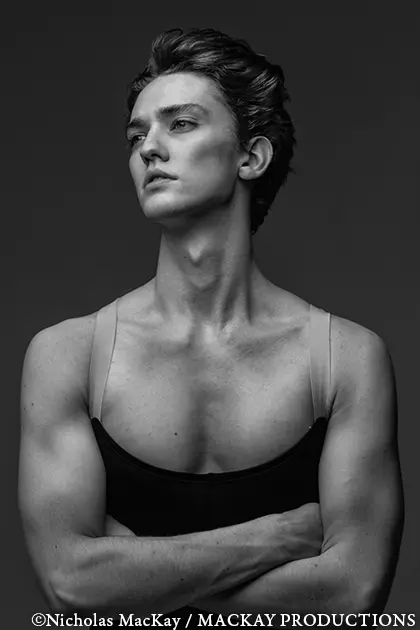
バイエルン国立バレエ団プリンシパル。K-BALLET TOKYO『ジゼル』『シンデレラ』などへの出演を通じて、日本でも熱狂的な支持を集めている。モンタナ州出身。11歳でモスクワのボリショイ・バレエ・アカデミーに入学し、アメリカ人として初めて正規ディプロマを取得。17歳で『白鳥の湖』ジークフリート役にてプロデビューを果たす。
ロイヤル・バレエ団、ミハイロフスキー劇場、サンフランシスコ・バレエを経て、国際的な評価を確立。舞台芸術にとどまらず、弟ニコラスとともにマッケイ・プロダクションズを設立し、映像制作や国際公演を通じてクラシックバレエの可能性を拡張している。
カルティエおよびドン・ペリニヨンより「フレンド・オブ・ザ・メゾン」に選出され、芸術、ファッション、メディアの領域を横断する現代バレエ界のアイコン的存在として活躍。昨年の「OTOBUTAI HORYUJI」に続き、2年連続の出演となる。Julian MacKay, a principal dancer with the Bavarian State Ballet, has also garnered a devoted following in Japan through his performances in K-BALLET TOKYO productions such as Giselle and Cinderella. Originally from Montana, he entered the Bolshoi Ballet Academy at age 11 and became the first American to graduate with a full Russian diploma. At 17, he made his professional debut as Prince Siegfried in Swan Lake.
He has since danced with major companies including The Royal Ballet, the Mikhailovsky Theatre, and the San Francisco Ballet, earning international acclaim for his artistry.
A trailblazer both on and off the stage, he co-founded MacKay Productions with his brother Nicholas, producing international performances and films that bridge classical ballet with global audiences. Named a Friend of the Maison by both Cartier and Dom Pérignon, he is recognized not only as a leading ballet dancer but also as a cultural ambassador and global influencer, redefining the role of the modern ballet artist.
This marks his second consecutive appearance, following last year's performance at Horyuji OTOBUTAI. -
大貫 妙子 Taeko Onuki
Singer
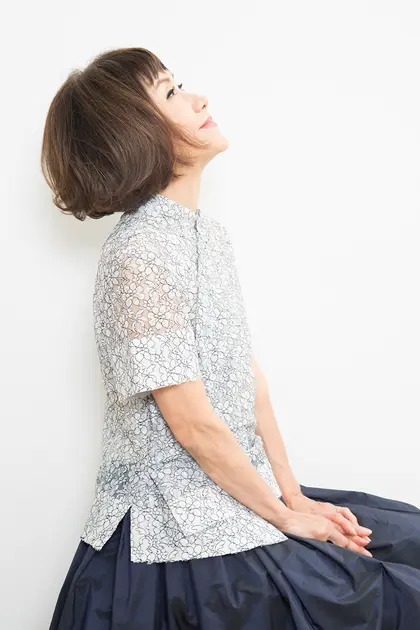
シンガーソングライター。東京生まれ。1973年、山下達郎らとシュガー・ベイブを結成。75年にアルバム『SONGS』をリリース、76年に解散。同年『Grey Skies』でソロ・デビュー。現在までに27枚のオリジナル・アルバムをリリースしている。1987年サントリーホールでのコンサート以降、バンド編成と弦のカルテットを中心としたアコースティックのライブを並行して行う。近年はオーケストラとの共演からコンピューターを使用した公演まで、多様なスタイルでのコンサートを展開している。
著作では、エッセイ集『私の暮らしかた』(新潮社、13年)ほか多数出版。CM・映画・TV・ゲーム音楽関連作品も多く、映画「Shall we ダンス?」(監督:周防正行、96年)のメイン・テーマ、「東京日和」の音楽プロデュース(監督:竹中直人、98年/第21回日本アカデミー賞最優秀音楽賞受賞)ほか数多くのサウンドトラックを手がける。Taeko Onuki is a Tokyo-born singer-songwriter. In 1973, she co-founded the band Sugar Babe with Tatsuro Yamashita and others, releasing their influential album Songs in 1975 before the group disbanded in 1976. That same year, she made her solo debut with Grey Skies, and has since released 27 original albums.
Since her 1987 concert at Suntory Hall, she has continued to perform in both full-band and acoustic formats, often accompanied by a string quartet. In recent years, she has embraced a wide range of concert styles—from orchestral collaborations to performances incorporating computer-based music.
In addition to her musical work, she has authored numerous publications, including the essay collection Watashi no Kurashikata (The Way I Live, Shinchosha, 2013). Her contributions to soundtracks span commercials, films, TV, and games. Notable works include the main theme for the film Shall We Dance? (dir. Masayuki Suo, 1996) and music production for Tokyo Biyori (dir. Naoto Takenaka, 1998), which earned the Best Music Award at the 21st Japan Academy Prize. -
沖仁 Jin Oki
Flamenco Guitar
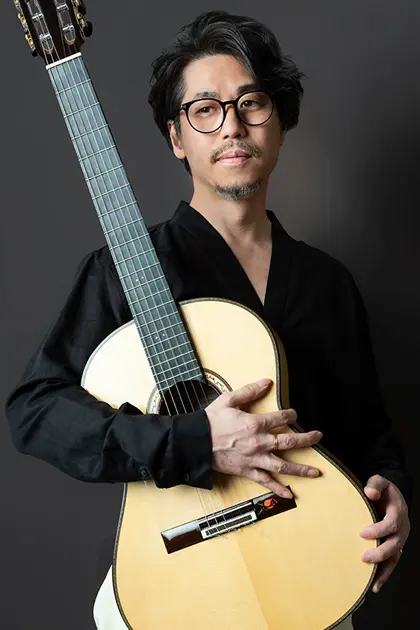
幼少の頃より様々な楽器に親しみ、クラシックギター、アコースティックギター、エレキギターを体系的に学ぶ。やがてフラメンコギターに魅了されフラメンコギターを岡弘祠、伊藤日出夫、セラニート氏に師事。スペインと日本を往復しながら本格的に研鑽を積む。
1997年日本フラメンコ協会新人公演にて奨励賞受賞。2006年メジャーデビュー。2010年、スペインのフラメンコギターコンクール国際部門で日本人初の優勝。その様子を密着取材したTBS系「情熱大陸」に出演。以降フラメンコギターの教則本を出版、EXILEへのシングル曲提供など多方面で活躍。
ステージ活動は、ソロ演奏に加え、世界の各ジャンルのトップアーティストとのコラボやオーケストラ、バレエ、長唄、能との共演など多岐に渡る。枠を超えたフラメンコギターの価値創造に全力を注ぐ。日本フラメンコ協会理事。Jin Oki studied flamenco guitar under masters Hiroshi Oka, Hideo Ito, and Serranito. Early in his career, he received the Encouragement Prize at the Japan Flamenco Association’s Newcomer Performance.
He made his major debut in 2006. In 2010, he became the first Japanese guitarist to win the international division of a flamenco guitar competition in Spain, earning acclaim for his artistry on the global stage. In addition to his solo performances, he has collaborated with artists across a wide range of genres, including orchestras, ballet, traditional Japanese music such as Nagauta and Noh, and pop acts like EXILE. He has also composed music for television commercials and authored instructional books on flamenco guitar.
Known for pushing the boundaries of flamenco, Oki blends tradition with innovation, expanding the expressive possibilities of the instrument. His work reflects a deep commitment to creating new artistic value for flamenco guitar in contemporary music and culture.
He currently serves on the board of the Japan Flamenco Association and continues to champion the richness of flamenco both in Japan and around the world. -
チェ・ハヨン Hayoung Choi
Cello
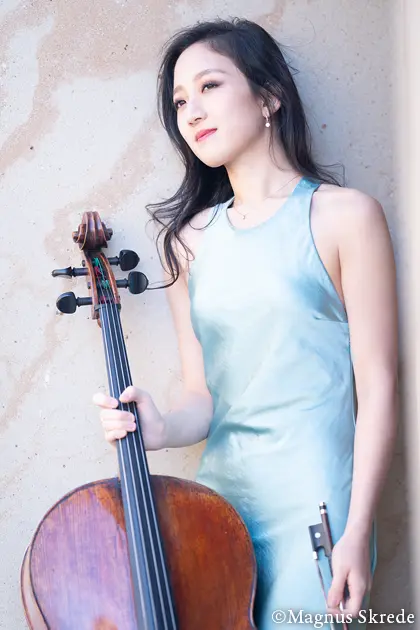
ドイツ生まれの韓国人チェリスト。パーセル音楽院やクロンベルク・アカデミーで学び、ブラームス国際やペンデレツキ国際などのコンクールで優勝。2022年にはエリザベート国際王妃コンクールでも優勝した。フェンディ音楽賞の第1回受賞者。
これまでブリュッセル・フィル、ベルギー国立管、クレメラータ・バルティカ、ベルリン・ドイツ響、ロサンゼルス・フィル、KBS響、ソウル・フィルなどと共演、アムステルダム・チェロ・ビエンナーレ、クロンベルク・チェロ・フェスティバル、シティ・オブ・ロンドン・フェスティバル、パブロ・カザルス音楽祭など著名な音楽祭に招かれている。
クロンベルク・アカデミーでF.ヘルメルソン、その後W.E.シュミットの各氏に師事。
使用楽器はシュタルケルが使っていた1707年製ヨーゼフ・フィリウス・アンドレア・グァルネリウス。
South Korean cellist Hayoung Choi, born in Bielefeld, is the First Prize winner of the 2022 Queen Elisabeth Competition for Cello. She also won top prizes at the Krzysztof Penderecki and Johannes Brahms International Competitions, and received the “Landgrave of Hesse Prize” and “Leyda Ungerer Music Prize” at the Kronberg Cello Masterclasses. Recently, she became the inaugural recipient of the FENDI Music Award.
Highlights include performances with the Brussels Philharmonic, Belgian National Orchestra, KBS Symphony, Boston Philharmonic, and others. In the 2023/24 season, she debuts with the LA Philharmonic, Deutsches Symphonie-Orchester, Seoul Philharmonic, and Filarmônica de Minas Gerais.
She made her solo debut at age twelve with Camerata Salzburg performing Haydn’s Cello Concerto No. 1, and has since played with Kremerata Baltica, the Frankfurt Opera and Museum Orchestra, and Barcelona Chamber Orchestra.
Choi has been invited to major festivals including the Amsterdam Cello Biennale, Kronberg Cello Festival, and Prades Pablo Casals Festival. She studied at the Purcell School and earned her Bachelor’s, Master’s, and Professional Studies diplomas at Kronberg Academy under Prof. Frans Helmerson and Prof. Wolfgang Emanuel Schmidt.
She performs on a 1707 ex-Starker Joseph filius Andrea Guarnerius cello, generously on loan from an anonymous donor. -
原 摩利彦 Marihiko Hara
Music Director
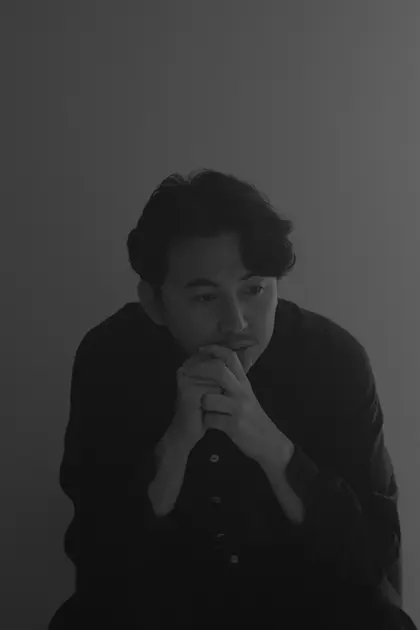
京都大学教育学部卒業。静けさの中の強さを軸にピアノを中心とした室内楽やフィールドレコーディング、電子音を用いた音響作品を制作する。アルバム『PASSION』(2020)、『ALL PEOPLE IS NICE』(2021)をリリース。アーティストグループ「ダムタイプ」へ参加。野田秀樹作・演出の舞台『正三角関係』その他、ダミアン・ジャレ、名和晃平、森山未來、田中泯などの舞台作品、東京2020オリンピック開会式追悼パート(森山未來出演)、映画『国宝』『流浪の月』(監督:李相日)、『夏の砂の上』(監督:玉田真也)、『ロストケア』(監督:前田哲)、NHKドラマ『幸運なひと』『デフ・ヴォイス 法廷の手話通訳士』、NHK『日曜美術館』新テーマソング(坂本美雨と共作)など、多岐にわたって音楽を手がけている。
Marihiko Hara is a Kyoto-based composer and sound artist whose work explores the subtle boundaries between sound, silence, memory, and space. His compositions blend field recordings, acoustic instruments, and electronics into quiet, immersive soundscapes.
Largely self-taught, he began composing while studying lifelong education at Kyoto University. His music spans film, dance, theatre, and installation—evoking the passage of time and the resonance of absence. Recent film scores include *Kokuho* (dir. Sang-il Lee), selected for Cannes Directors’ Fortnight 2025, and *Deaf Voice* (dir. Kazutaka Watanabe), nominated for the International Emmy Award 2024. He has collaborated with Ryuichi Sakamoto, Damien Jalet, Kohei Nawa, Min Tanaka, NODA MAP, and the Korea National Contemporary Dance Company. He is also a member of the artist collective Dumb Type, and has released solo and collaborative works internationally. His installations and site-specific compositions have been presented in museums and public spaces, exploring how sound shapes perception. Hara also leads a peace-driven sound project, creating new works from recordings shared by individuals affected by displacement and violence.
His music has been featured worldwide in films, exhibitions, and performances. He welcomes commissions and interdisciplinary collaborations. -
OTOBUTAI Orchestra Presented by Grand Philharmonic KYOTO
Orchestra
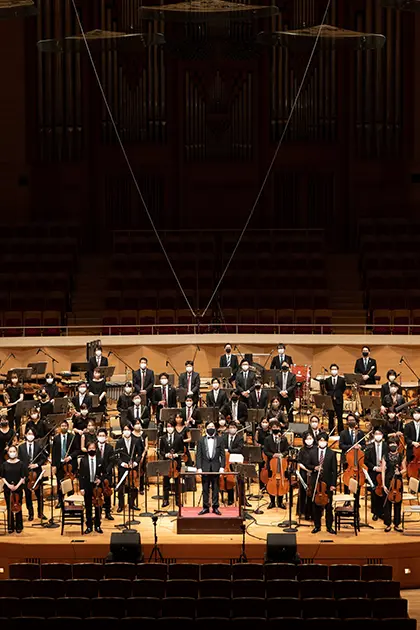
グランドフィルハーモニックは2018年、国内外で活躍する現役トップレベルの演奏家や新進気鋭の若手が集結し東京で活動を開始。
井ノ原快彦、大貫妙子、清春、小林幸子、坂本龍一、島津亜矢、湘南乃風、杉山清貴、谷村新司、一青窈の各氏をはじめする日本を代表するトップアーティストと共演するなど、クラシックのみならず、ジャンルの枠を越えた多様な活動を展開。他に類を見ない次世代型オーケストラとして多方面より期待されている。
エグゼクティブプロデューサーに作曲家・千住明氏が就任。
今回は関西拠点楽団“グランドフィルハーモニック京都”が中心となり特設オーケストラとして登場する。Established in 2018, the Grand Philharmonic brings together some of Japan’s top musicians and up-and-coming young talent performing in Tokyo, with composer Akira Senju serving as Executive Producer.
The orchestra has established itself as a pioneer of a new ensemble, transcending the classical music realm by performing a wide range of musical genres.
Their collaborations with top Japanese artists have included, but are not limited to, Yo Hitoto, Yoshihiko Inohara, Kiyoharu, Taeko Onuki, Ryuichi Sakamoto, Aya Shimazu, Shonan no Kaze, Kiyotaka Sugiyama, and Shinji Tanimura.
In addition to their collaborations with singers, the Grand Philharmonic’s versatility extends to recording for video games such as SQUARE ENIX’s Triangle Strategy and Pokémon’s Pokémon UNITE, as well as TV shows like Netflix’s Rilakkuma and Kaoru.
For this concert, the Kansai-based Grand Philharmonic Kyoto will make a special appearance.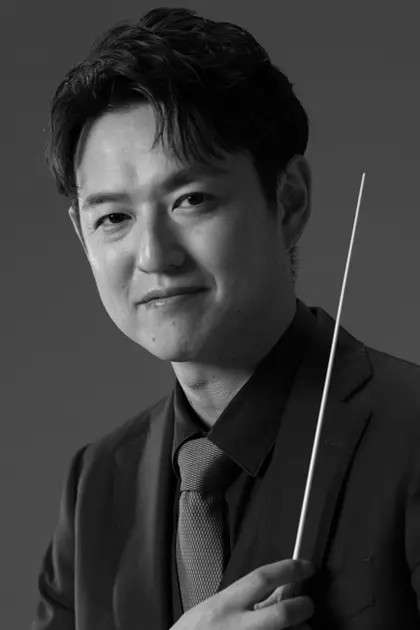
Conductor
佐々木新平 Shimpei Sasaki
幼少より音楽に目覚め、東京学芸大学および桐朋学園大学にて指揮を専攻後、オーケストラ指揮者としてデビュー。ドイツミュンヘンへ留学しヨーロッパ各地にてさらなる研鑽を積んだ。数々のコンクールにおいても優秀な成績を収め、2015年フランスのブザンソン国際指揮者コンクールでは本選最終の8⼈に選出。これまで国内の主要楽団に客演。現在オーケストラを中心に吹奏楽、合唱、オペラ、バレエ等あらゆるシーンで才能を発揮。人気・実力ともに兼ね備えた、世代を代表する指揮者の一人として注目を浴びている。
One of the young Japanese talented conductors. After studying musicology and conducting in Japan, he also studied abroad in Munich, Germany. He received the honorable awards in several international conducting competitions in Europe. So far, he has conducted almost all major professional orchestras in Japan. Now, he has displayed his talent in every musical scene like pioneering subscription concerts, special classical concerts, music appreciation classes for young people, television or radio music programs, recordings for soundtrack on movies, pops and video games at studio, in conducting symphony orchestra, brass band, chorus, opera, ballet etc. He has tried to devote himself to a state of enlightenment as a conductor with a supple mind all over the world.
-
coming soon
Actor






